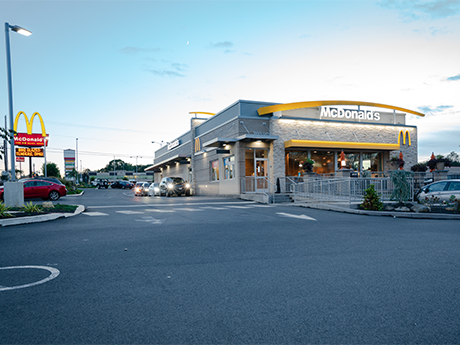Retail development programs have allowed retailers to streamline their goals by creating prototype models based on site particulars. This process saves developers and retailers money as they can be flexible in choosing models that work for each site without needing to alter layouts and features too much between builds. But what makes for successful prototypes and program standards? Can this approach work outside of the retail world?

Steven T. Fortunato,
Bohler
“The lessons of retail programs can apply across property types in this sense: land development consultants and site designers can learn how specific clients need their set of standards and guidelines implemented. It’s essential to thoroughly understand a program client’s procedures, and we’re expected to know these parameters inside and out,” says Steven T. Fortunato, a senior project manager at Bohler’s Rehoboth Beach office in Delaware. Bohler is a land development design and consulting firm that specializes in helping developers move their projects forward faster.
“The retail program methodology translates well to other sectors. Starting off with either a new developer or a new client is an opportunity to learn their standards — or help the client create them. The end result must offer the same level of confidence whether the product is retail or industrial or residential — a shared understanding of what they’re looking for with their product as well as opportunities to save time and money.”
Successful Retail Prototypes and Program Standards

Tung-To Lam,
Bohler
“These retail prototypes shape the flow of the site and how people move through them and interact with buildings,” explains Tung-To Lam, a Bohler associate in Warren, New Jersey.
Planning according to program standards makes for a better, more successful product overall. For example, drive-thrus are must-have inclusions for many end users, and programs keep these retail and small commercial products on track, offering a tried-and-true, flexible guide for design without forcing developers to reinvent their plans for each project.
For larger retail chains order points, side-by-side drive-thrus and similar considerations can help drive the entire project and help avoid costly changes down the road, explains Fortunato.
An experienced consulting and design firm can help smaller or newer (or new to a field) developers create programs simply by asking a list of comprehensive questions. This checklist, developed from experiences in the industry, can reveal points of discernment early in the design process. Drive-thru layout, general site circulation, parking requirements, preferred parking space locations, loading needs and entrance requirements/traffic movement are all part of any essential retail development checklist. Taking these concerns into consideration will also make clear to the developer and client upfront where slowdowns might occur with authorities having jurisdiction or transportation agencies.
Applying Lessons Beyond Retail
Strategizing with clients to ensure properties work well requires checklists, standard questions and a boots-on-the-ground approach to ensure success. Fortunato emphasizes the need to walk each site with the developer and discuss preferences.
Questions based on experience and in-depth knowledge asked early on can save the client time and money down the road. “Everything moves very fast at the beginning for developers. They’re talking with brokers, working deals, getting financing, obtaining surveys and putting everything together. Without a guiding approach, clients might not have time until it’s too late or too costly to consider questions like: Is this wide enough? Is this too steep of a turn? Would additional space be better?”
“Getting all those answers up front leads to a super smooth process. The less time a client spends vetting land development questions, the more time they can spend focusing on the ultimate product. Bohler’s approach helps them be proactive about planning,” says Fortunato.
In-depth planning and programs have become expected for retail and small commercial real estate. “But if everyone looked at projects in industrial and multifamily in the same way from the very beginning, it would streamline the process,” he indicates. “Codifying every step in the development process and having high-quality standards and expert advice allows clients to have confidence.”
Bigger national brands often already have certain standards in place, but these guidelines will always need to be altered to be site-specific or jurisdiction-specific or state-specific, Fortunato explains. “Whether it’s a one-time local developer or a new chain or new industry, you want to ensure you’re getting that same level of competence early on.”
Industrial Development — Program Approach
For industrial development, planning for efficiency is essential but learning industry specifics helps inform location, number of truck parking spaces, employee parking spaces, circulation routes and more. In the same manner that fast-food restaurants determine the best capacities for their drive-thru lanes, industrial programs can maximize efficiency in areas of repetition.
“If you have a layout that requires every truck to slow down unnecessarily at the same point on a property, that affects every single truck every single time for years. That adds up to a ton of lost time on the client’s part,” explains Fortunato.
Standard building sizes and bay dimensions form a sort of “program” for industrial development. Rigid bay rectangle sizes and the number of bays needed to make the yield work for the project are factors in determining where other features — like employee parking, lighting and proximity of truck parking to other features — can fit into a design.
Lam describes how programs could apply to comply creatively with aesthetic choices or land use requirements. Self-storage or warehouses can have facades that make them look like something more inviting — office buildings can lend their look while building interiors conform to industrial standards.
With many industrial developers needing to move quickly to acquire sites, keeping zoning to areas where industrial is already permitted by right can limit slowdowns. In-depth knowledge and checklists can help developers make informed decisions on parking ratios, ceiling heights, track and loading dock size needs, all with an eye for speed to market.
These considerations can help developers plan better by ordering materials ahead of time. Unlike in retail programs, industrial developers can (at-risk), “Preorder construction documents and preorder material. This way,” explains Lam, “when you’re ready to go to construction, you don’t need to wait anymore.”
Residential Development — What Can We Learn from Retail Programs?
The process of streamlining based on client needs also applies to residential: a solid understanding of their product makes for a better outcome. Client preferences, options, intended market and density factors, planned amenities, etc. make up the backbone of a programmatic checklist for residential.
Fortunato describes how helpful it can be to assist even large, national developers in coming up with standards to create grading parameters, elevation considerations and ways to avoid any waste by, for example, simplifying earthworks to minimize moving dirt around multiple times.
“The dollar amount for earthwork savings in residential is huge. We’ve shaved millions of dollars off phases of contracts just on earthworks alone. We do this by being particular and asking how exactly a contractor is going to grade a site.” This approach is particularly important for residential as small changes are multiplied across many, many units.
Having a final goal in mind helps streamline, but “Residential is probably the most common property type where developers are developing sites without having an end user. Still, I can often connect developers and builders. This helps if developers want to get projects under contract while everything is still in early stages and before design is final.”
Expert questions, checklists and in-depth knowledge help cut out delays and streamline processes. A modular and adaptable approach to development can avoid delays long before they appear on the horizon or the bottom line.
— By Sarah Daniels. Bohler is a content partner of REBusinessOnline. For more articles from and news about Bohler, click here.


